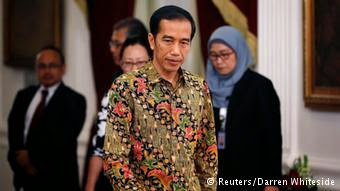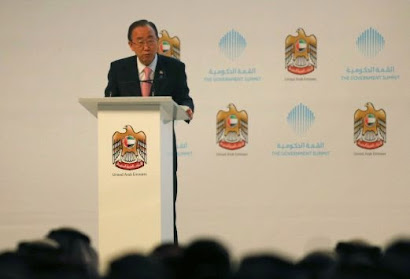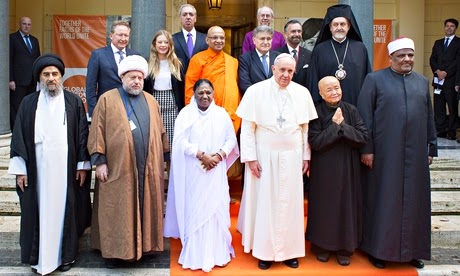Irfan Kortschak, Contributor Jakarta Post, Jakarta
In the early 1990s, Jakarta-based American expatriate Alex Korns began exploring the foothills around the twin volcanoes, Mt Gede and Mt Pangrongo. In his search for a route around the twin peaks, Alex and his walking companions explored a terrain that consisted of rice paddies, dry fields, tea plantations and tropical rain forest without maps and relying only on information provided by local Sundanese villagers.
While the Sundanese villagers were intimately familiar with the paths that they used on a daily basis, they often had little interest in what lay further afield. Finding the route was thus a major navigational challenge.
Alex notes that the route around the twin peaks crosses numerous valleys that lead down from the mountains, and that crossing points for the valleys are few and far between. "If you miss one crossing, it may take hours to find the next," says Alex, "but getting lost was half the fun." After five trips around the peaks, Alex became proficient at navigating with a compass, an altimeter and field notes from previous visits.
However, while he and his friends obviously enjoyed the challenge of pioneering new paths, they couldn't help being surprised at how few other hikers and walkers they met on the paths.
As Alex says: "It is an extraordinarily diverse area with a number of contrasting environments. Hikers can walk on the dikes between rice paddies in sandals or bare feet, or through fields and vegetable patches cultivated by Sundanese villagers. A stroll through the tea gardens offers beautiful views, while higher up and further from the settled areas, there are stands of tropical rain forest teeming with birds and other wildlife. It's a marvelous area for walking."
Alex believed that the absence of hikers was not due to an innate lack of interest in the natural environment, but to lack of information. In Europe, America and Australia, hiking through rural areas is an established tradition. More popular routes in these countries are clearly signposted and locals are familiar enough with the paths and the predilections of hikers that they are able to provide good information. However, the most important resource for visitors is a good map that clearly describes walking routes.
Alex was convinced that Jakartans could and would learn to appreciate and enjoy the environment around them if only they knew about it and had the necessary information regarding trails through the area. Thus, in 1997, he approached a group of students and graduates from the University of Indonesia's Geography Department to survey a series of maps describing hiking trails through the Gede-Pangrango foothills.
Initially established as an informal club, this group later established a more formal body, the Forum for Information on Nature Tourism, usually known by its Indonesian acronym, WIPA. While initially focusing on hiking maps, in order to make these maps more usable, the team also developed a series of detailed guide books that describe local landmarks and points of interest in the area.
So far, Alex and the WIPA team have developed a set of four maps and accompanying guide books, covering Cisarua, Cipanas, Cugenang, and Ciawi, comprising half the circuit of the twin peaks, with plans to cover other areas sometime in the future. The maps and guidebooks are an excellent first step towards encouraging Jakartans to enjoy their natural surroundings. In practice, however, how easy are they to use?
It must again be emphasized that the paths described on these maps are not long established walking trails that attract hordes of tourists and other hikers. In many ways, this is what makes them so attractive: they provide a chance for the walker to explore regions of Indonesia that, although within spitting distance of the capital, are as yet almost entirely unexploited by the tourism industry.
On the other hand, it also means that first time users must expend some effort to become familiar with elementary navigational skills, or to be accompanied by someone who has these skills.
On a first attempt to find one of the trails through the Gunung Mas tea plantation, this writer tried to follow a section of the trail, but soon found himself straying. Without any experience and without any navigational equipment apart from the map, it is by no means obvious where the actual route is: after all, there are many paths through the tea fields, and it is very easy to take the wrong path.
Even with good Indonesian language skills, attempts to ask locals for directions elicited a blank look followed by the question: "Are you looking for Taman Safari?" Only a few kilometers away, Taman Safari is the kind of large scale attraction that a tourist is meant to visit, so locals may assume that through some act of minor idiocy, the visitor has somehow managed to miss the huge signs and stray from the main road into the tea gardens in the search for elephant rides and roaring lions -- which are clearly audible in the distance.
On the other hand, while it is not always easy to find the trail marked on the map, it is always easy to return to a major road or village where, at the very least, hot sweet tea and noodles may be available. It is hard to seriously object to spending a day wandering in the countryside here, even if one doesn't get where one intends.
The following week, returning with Alex, it turns out to be much easier. He is equipped with a compass, an altimeter and a GPS device, the last of which he deprecates as "not strictly necessary." Alex points out that since all the maps and books describe the altitudes at which land marks and turn-offs are located, as well as co-ordinates, an altimeter is extremely useful.
"So long as you are on the right ridge, you can almost always find points on the map by checking the altitude," he says. Tom, an expatriate who has used the maps and guidebooks on numerous occasions, points out that finding the path is an interesting intellectual challenge, like solving a puzzle or, perhaps more appropriately, passing through a country-house maze.
"After going out for walks on several occasions, I've gotten a lot better at finding the paths. Learning to find your way is an integral part of the experience."
Alex acknowledges that it takes some commitment and energy to find a trail and to learn how to interpret the maps, the guidebooks and the landscape. Alex sees a number of ways in which less experienced hikers can overcome the challenges involved in finding trails.
Firstly, groups of interested hikers could explore the area together, with the less experienced members of the group learning the skills from, or at least following in the path of, the more experienced. With growing interest in hiking as a hobby, there may eventually be a demand for local guides who can assist those with limited navigational skills to walk through the area.
In the longer term, when a critical mass of visitors becomes interested in the walks, locals in visited areas may become aware of the potential economic benefits to be derived by establishing food stalls, simple restaurants, and even homestays along the routes. When this happens, locals may see the value in establishing and maintaining sign posts and other aids.
In his preface to the guidebooks, Indonesia's most prominent environmentalist, Emil Salim, says: "If the mountains become bald due to human activity, floods will inundate [Jakarta's watersheds], bringing suffering to tens of millions. For this reason, it is important to invite, enlighten and persuade residents to protect that area."
The maps and guidebooks produced by Alex Korns and the geographers from WIPA are an excellent first step in creating an interest in the area on the part of visitors and residents alike. As such, it is hoped that they will play a contributing role in ensuring the preservation of this area for future generations.
The Puncak Trek and Map Series was published by WIPA in association with Godown, an imprint of the Lontar Foundation. The maps and guides are available individually or as a set of four from good book stores in Jakarta.
Publication of the materials was made possible by assistance from the Environmental Support Program of the United States Agency for International Development, the New Zealand Agency for International Development, the World Bank, and the Indonesian International Education Foundation, funded by the Ford Foundation.
At present, four maps and guide books are available either as a single set or individually from a number of outlets around Jakarta and elsewhere.
For further information, please see http://www.puncaktrek.com.






